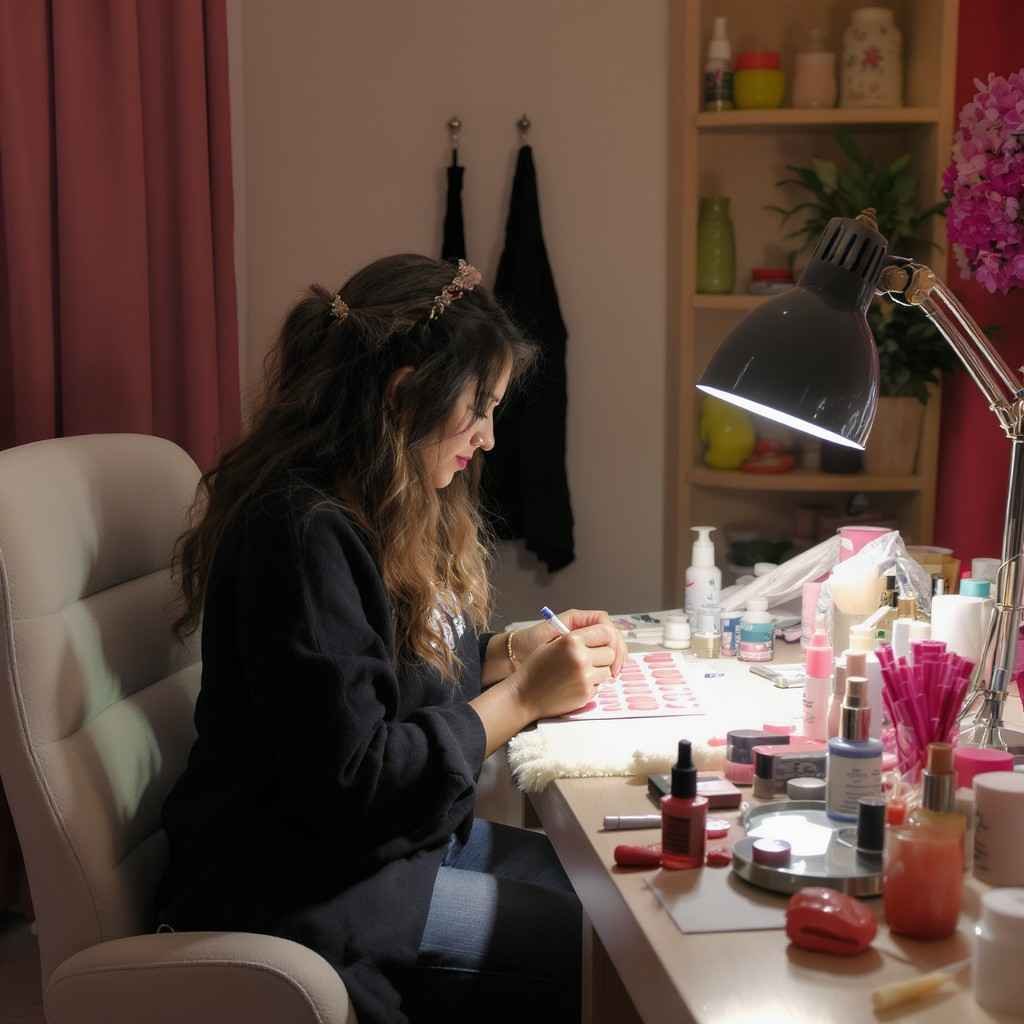When it comes to manicure choices, the debate between dip powder and acrylic nails often sparks interest among beauty enthusiasts looking to enhance their overall beauty experience. Each method brings its own benefits, and while both are popular options, your choice depends on your needs and style. For a flawless, durable, and long-lasting look, many find dip powder a great fit, especially for an upcoming event, while others trust the classic set of acrylics to complete their outfit with an extra touch of glamour.
Whether you’re thinking about trying something unique or just want to upgrade your nail game, understanding the differences, comparisons, and pros and cons of each method is key to selecting the right one. From achieving a bold finish to getting a result you can trust, both types offer something special. So break down the options, consider whatever kind works for you, and make the best choice for your next major moment.
Quick Comparison Summary
Both manicure types are long-lasting vs traditional polish, but acrylics last eight weeks, dip lasts three weeks. Acrylics have methyl methacrylate, a chemical that may trigger allergic reactions, irritation, or affect sensitive skin and those with allergies. Dip is a safer spa manicure without harsh chemicals and is the preferred choice for an active lifestyle or fast natural nails growth. Acrylic manicures offer more flexibility, but dip powder manicures are gentler for frequent use of hands.
The Application Breakdown
Acrylic Application
Getting acrylic nails involves combining a special powder and liquid to create a dough-like material that a nail tech carefully paints onto the nail and molds into a custom shape. Once painted, the nails are usually air-dried. If you want nails longer than your natural nails, the tech can use nail tips—which are glued on and become part of the manicure—or a nail form that slides under the nail to help shape the acrylics before being removed after the nails have hardened.
Some people believe nail tips are stronger, while others prefer nail forms as they don’t add pressure to the nail plate. The method varies based on preference, but both offer a durable manicure compared to traditional polish, and understanding this makes the difference clear when dip nails are applied instead.
Dip Powder Application
The way dip powder nails are applied is quite different and even popular in satisfying ASMR videos across platforms like Instagram. First, a liquid base coat is applied to the nail, then it’s brushed with colored powder, and afterward coated with a protective clear polish. This application process is usually repeated at least twice to build up rich pigment. Although dip powder manicures are mostly done on natural-length nails, you can still achieve a longer look by using nail tips, just like with acrylics.
If you’re unsure whether dip powder is right for you, understanding its strengths and weaknesses can help. Explore the full list of Pros & Cons of Dip powder.

Which One Stays Longer?
When it comes to how long your nails will last, the lifespan of each manicure matters a lot—especially if you want fewer trips to the nail salon. From my experience, dip manicures generally hold up well for about three weeks, and sometimes even four weeks if you’re careful. On the other hand, acrylic nails can last as long as six weeks to even eight weeks, but they do need a fill every couple of weeks to keep up with growth.
Still, these are just estimates. Your daily activities, like if you work with your hands, can affect the wear. For both types, natural nail’s growth can cause an apparent gap near the cuticle, where the polish pulls away. Whether it’s dip or acrylic, expect to make a trip to the salon around every three weeks—either for a fill or to get a new set. You might also notice some chip or scuff marks sooner if your lifestyle is more hands-on.
Tips to Make Your Nails Last Longer
From my own routine, I’ve learned that whether you go for dip or acrylic manicures, a few extra steps can help them last much longer than just using regular nail polish. To keep your beautiful nails looking fresh and extend their life the extra mile, the best advice is to wear gloves while washing dishes or working with your hands.
Also, choose nail shapes and nail lengths that don’t break easily—there are so many types available, just pick one that fits your lifestyle. And avoid picking at your manicure, as it causes lifting and peeling of the polish.
To help your real nails and hands stay strong and moisturized, start applying cuticle oil whenever your cuticles seem dry. It’s also important to clean your acrylic nails regularly with a soft brush, then dry them well. Don’t skip getting them filled on time to prevent breakage. And for longer-lasting results, always choose quality nail polish brands that actually deliver.
The Removal Process
It might be tempting to pick at your nails, but using safe removal methods is key to keeping them healthy. Whether you’re dealing with dip nails or acrylic, knowing the full removal process matters. In the acrylic vs dip debate, it’s a good practice to:
- Give nails a break in between manicures so they can remain healthy
- Watch for signs like:
- Rough white patches on the nail surface
- Peeling, ridges, splitting
- Discoloration, dehydrated cuticles
- Rough white patches on the nail surface
You can avoid these problems by following proper removal techniques.
Removing Acrylics
To remove traditional acrylic nails, it’s best to leave it to the pros to avoid damaging your nail bed. At the salon, a nail tech will usually:
- Trim the nails
- Buff the polish
- Soak your nails in 100 percent pure acetone
- Push off the polish using a metal cuticle pusher
The process is often repeated, sometimes twice or more, until all the polish is removed. After the removal process, they will:
- Rub cuticle oil onto your nails
- Buff it in with a soft buffer
- Finish with a final layer of cuticle oil
Removing Dip Powder Nails
Just like acrylics, removing dip powder nails is more complex than removing regular nail polish. To avoid damaging the nail bed, visit a specialized nail technician who will:
- Strip the old manicure carefully
- Use an electric file to trim down the top layers of polish
- Apply acetone to help it penetrate
Once soaked, the product can be:
- Pushed or wiped off easily
- If the coat was on the thicker side, the process of soaking and wiping the powder may be repeated
Caring for Your Nails After Dip or Acrylic
After removing dip powder or acrylic nails, your natural nails need time to heal. It’s a good idea to give them a breather between manicures, allowing space for a proper strengthening treatment. Some salons offer these treatments after the removal process, but I’ve found that simple steps at home work just as well.
I always apply cuticle oil daily to keep my cuticles soft and hydrated. To help your nails grow strong, include biotin-rich foods like avocado, eggs, and almonds in your diet. A bonus? Biotin also helps your hair grow faster, making it a true win-win for beauty care.

Which is More Budget-Friendly?
From my experience, the pricing of dip powder and acrylic nails is quite similar, making it tough to choose based on cost alone. A typical acrylic set usually runs around $35-$45, while a dip powder manicure tends to cost between $30-$50 on average. If you’re curious about a deeper breakdown, check out the full guide on dip Manicure nail costs.
Of course, location plays a big factor, and any nail art designs may add extra to your total. So while both types of manicure are close in pricing, the small details like where you go or what style you choose may play a part in what you pay too.
Safety Precautions for Dip and Acrylic Nails
In my experience, dip manicures are often seen as safer than gel manicures because they don’t expose the wearer to harmful UV rays like hard gel methods do. The process traditionally involves dipping fingers into a jar of dip powder, but in a busy salon setting, this can turn unsanitary if multiple clients use the same colors. I always tell my nail tech to avoid dipping my nails into a communal pot, as this can cause cross-contamination. A better approach is to brush the powder on or pour it into a separate container, even though it might be wasteful for the salon.
When it comes to acrylic, make sure your nail tech is using the right bonding agent. If they use Methyl methacrylate monomer (MMA), it’s a red flag — MMA can cause painful breakage and even infection. I’ve seen cases where a small gap between the nail bed and the enhancement becomes a home for bacteria to grow. So it’s important to check what kind of product your tech is using because if any damage does occur, you’re more prone to issues that could be hard to fix.
Which Type of Manicure Fits You Best?
When choosing between acrylic nails and dipped nails, it really depends on your personal preferences and needs. If you love longer nails with intricate designs and don’t mind frequent trips to the salon, then acrylic may be your preferred choice — they’re durable, offer longevity, and can be touched up with a fill every two to three weeks.
On the other hand, a dip powder manicure is quicker, involves less time, and skips the harsh chemicals, which is a big deciding factor for those with sensitive skin. For shorter side nails or simpler designs, dip is generally preferred.
Both types of manicures are great options that last longer than traditional polish, and you can still enjoy trying trending nail colors from top brands that make polishes in various forms. So whether it’s style, application process, or how much upkeep you want, your perfect manicure is just a smart choice away.
FAQS
What are the negatives of dip powder nails?
Some users find that dip nails have a heavier feel and appear bulkier, making them seem less natural-feeling compared to gel. From my experience, they can also be harder to remove, often needing soaking in acetone for about 10 to 15 minutes. If done with improper removal, this can seriously damage your nails and make the process more frustrating than expected.
What is the healthiest nail option?
When comparing traditional techniques like acrylic and gel, I’ve found dip powder to be a healthier choice. It doesn’t need UV light exposure, which avoids the harm linked to UV lights. Plus, dip powder nails are more resistant to chipping and peeling, giving you longer-lasting manicures that feel just as polished without added risk.
Is acrylic bad for your nails?
Although acrylic nails give the impression of being strong and healthy, they can actually damage your nails, skin, and even your general health. The substance used in them may leave your natural nails thinner and weaker, and the chemicals needed to apply and remove them often irritate the skin over time, especially with frequent use.
Do dip nails break easily?
From my experience, dip powder manicures are much more durable and sturdier than other types, which makes them a great option—especially if you work with your hands a lot. While breaking a nail can be painful and annoying, particularly after paying a hefty price for a high-end manicure, dip nails tend to hold up better and don’t break as easily.
What’s better than acrylic nails?
If you want durability and love dramatic length, acrylics are a solid choice—they’re tougher and can be sculpted into long, elaborate designs. But if you prefer a natural look and care more about your nail health, then a gel manicure might be the better option to go for.

